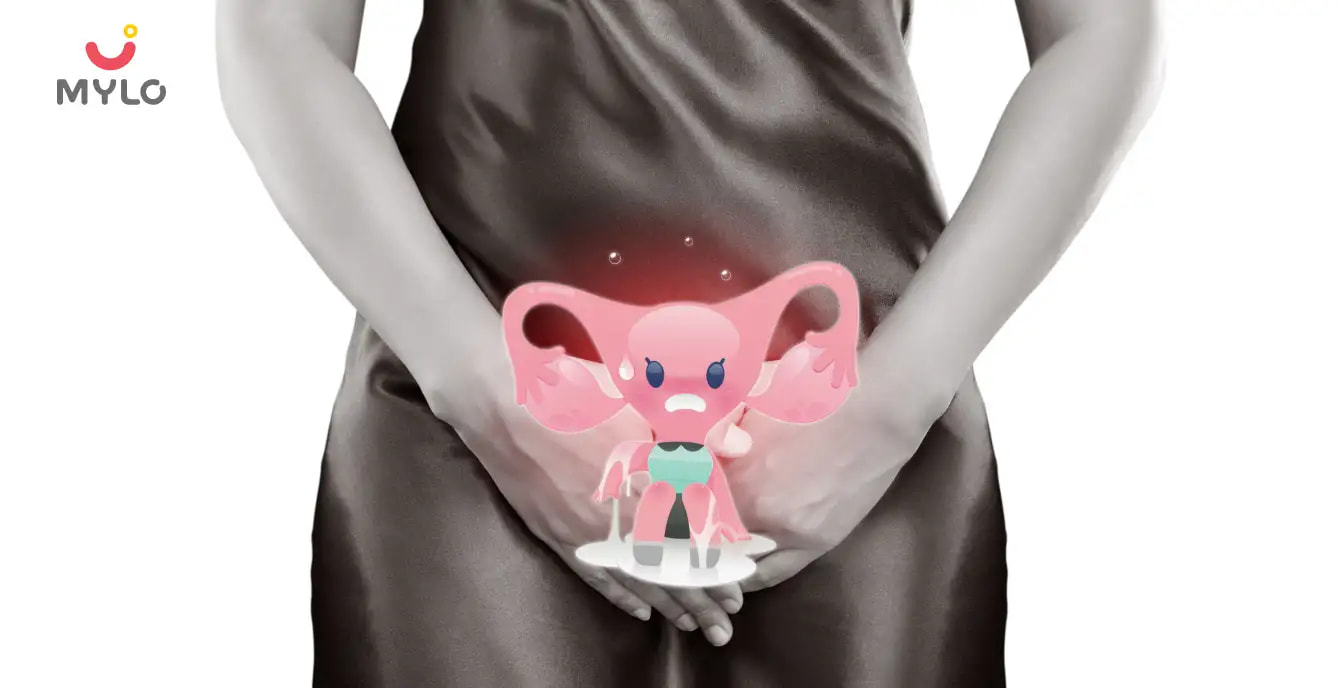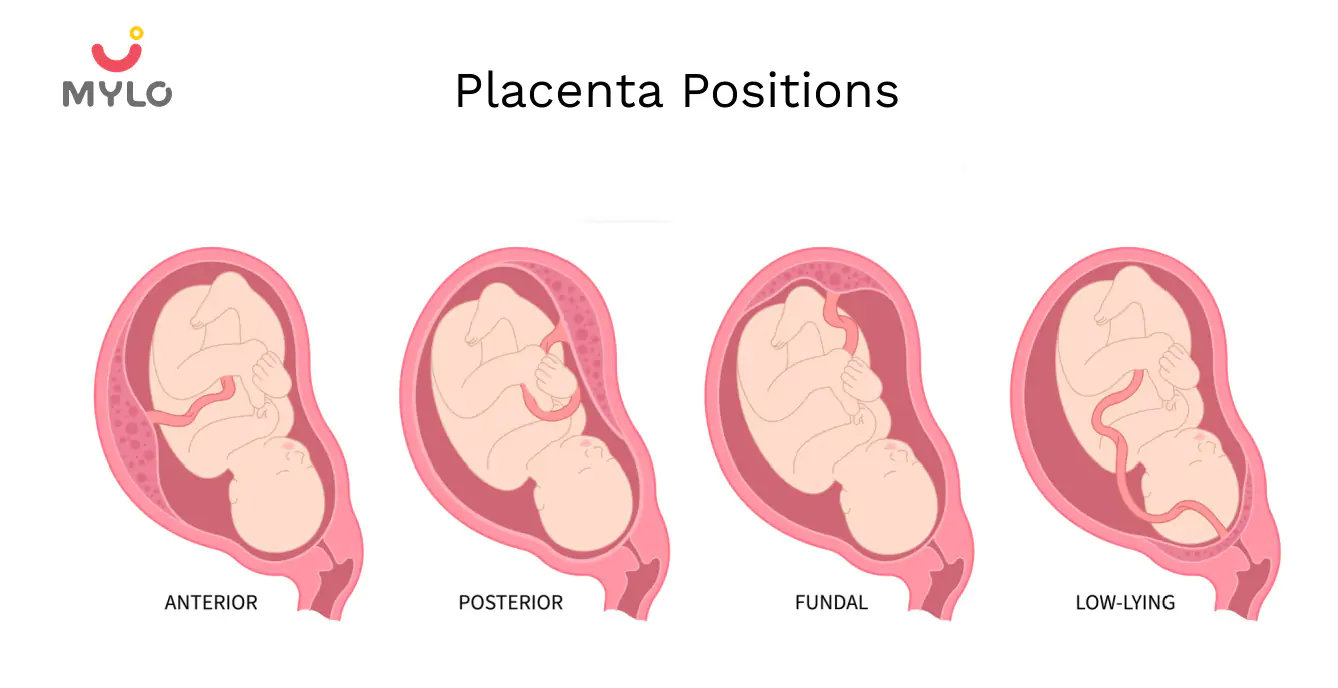Home

White Creamy Discharge: Is It Normal or a Cause for Concern?
In this Article

Getting Pregnant
White Creamy Discharge: Is It Normal or a Cause for Concern?
Updated on 10 October 2023
As a woman of reproductive age, it is common to experience some sort of vaginal discharge. But how to know what’s normal and what’s a cause for concern? Well, the colour, texture and smell of vaginal discharge can help women distinguish whether their discharge is normal or a sign of an underlying condition. In this article, we will be discussing a particular type of discharge- white creamy discharge and understand its causes, tips to manage and when to seek medical help.
White creamy discharge meaning
White and creamy discharge is a common occurrence in women of all ages. It is a natural vaginal secretion that can vary in consistency and volume throughout the menstrual cycle. This type of discharge is often referred to as cervical mucus or vaginal discharge. It is produced by the cervix and serves several important functions in the female reproductive system.
Such a discharge is usually thick and sticky in nature. It may resemble the texture of lotion or cream, hence the name. This type of discharge is often a sign that the body is preparing for ovulation. The cervix produces more mucus during this time to provide a protective environment for sperm to survive and travel through the reproductive system.
The presence of creamy discharge before period is often a positive sign that a woman is in her fertile window and can increase the chances of conception.
Is it normal to experience creamy white discharge before period?
Experiencing creamy white discharge before a period is completely normal for many women. As the menstrual cycle progresses, hormonal changes in the body can cause the cervical mucus to change in consistency and appearance.
Towards the end of the menstrual cycle, the body prepares for menstruation by producing more mucus. This can result in an increase in creamy white discharge. The amount of creamy white discharge can vary from woman to woman. Some may experience only a small amount, while others may have a larger volume.
It is important to remember that every woman's body is different, and what is considered normal for one person may not be the same for another. As long as the discharge does not have a strong odor, is not accompanied by itching or burning, and does not cause any discomfort, it is generally considered to be a normal part of the menstrual cycle.
What are the causes of creamy discharge before period?
Here are some of the reasons responsible for a creamy discharge in women:
1. Ovulation
During ovulation, the body produces more estrogen, which can result in an increase in cervical mucus. This increased mucus production can lead to the presence of creamy white discharge.
2. Pregnancy
In early pregnancy, hormonal changes can cause an increase in vaginal discharge. This discharge may be white and creamy in consistency.
3. Hormonal imbalances
Fluctuations in hormone levels can affect the consistency and appearance of vaginal discharge. Conditions such as polycystic ovary syndrome (PCOS) or hormonal medications can disrupt the normal balance of hormones and result in an increase in creamy discharge.
4. Infections
Certain infections, such as yeast infections or bacterial vaginosis, can cause changes in vaginal discharge. In these cases, the discharge may appear white and creamy, but it is usually accompanied by other symptoms such as itching, burning, or a foul odor.
5. Sexual arousal
Sexual arousal can also lead to an increase in vaginal discharge. This discharge is usually clear or white in color and has a creamy consistency.
You may also like : Types of Vaginal Discharge, What They Mean and What is Normal?
When to seek medical attention for white creamy discharge?
While a discharge of creamy consistency is generally considered to be normal, there are certain instances where it may be a cause for concern. If you experience any of the following symptoms along with the discharge, it is advisable to seek medical attention:
1. Strong odor
If the discharge has a strong, unpleasant odor, it may indicate an infection or other underlying condition.
2. Itching or burning
If the discharge is accompanied by itching, burning, or irritation, it could be a sign of an infection or allergic reaction.
3. Abnormal color or texture
If the discharge has an unusual color, such as green or yellow, or if it has a frothy or cottage cheese-like texture, it may be indicative of an infection.
4. Pain or discomfort
If the discharge is accompanied by pain or discomfort in the pelvic area, it may be a sign of an underlying condition that requires medical attention.
5. Changes in menstrual cycle
If the discharge is accompanied by changes in your menstrual cycle, such as irregular periods or unusually heavy bleeding, it is important to consult a healthcare professional.
How to manage creamy discharge?
Having understood white creamy discharge meaning and causes, let us now learn some tips that can help you manage creamy white discharge before period:
1. Practice good hygiene
Maintaining good hygiene is essential to prevent infections and keep the vaginal area clean. Avoid using harsh soaps or douches, as these can disrupt the natural balance of bacteria in the vagina. Instead, opt for mild, unscented soaps and water for cleansing.
2. Wear breathable underwear
Choose underwear made of breathable fabrics, such as cotton, to allow for air circulation and reduce moisture in the vaginal area. Avoid tight-fitting clothing or synthetic materials that can trap heat and moisture.
3. Avoid douching
Douching is not recommended, as it can disrupt the natural balance of bacteria in the vagina and increase the risk of infections. The vagina is self-cleaning and does not require additional cleansing.
4. Use protection during sexual activity
Using condoms or other barrier methods during sexual activity can help reduce the risk of sexually transmitted infections, which can cause changes in vaginal discharge.
5. Stay hydrated
Drinking an adequate amount of water can help maintain overall vaginal health and prevent dehydration, which can affect the consistency of vaginal discharge.
6. Maintain a healthy lifestyle
Eating a balanced diet, exercising regularly, and managing stress can contribute to overall reproductive health. A healthy lifestyle can help regulate hormone levels and reduce the risk of hormonal imbalances.
7. Regular check-ups
Regular visits to a healthcare professional for routine check-ups and screenings can help detect any underlying conditions that may be causing changes in vaginal discharge. It is important to discuss any concerns or symptoms with a healthcare provider.
The Bottomline
In conclusion, experiencing white creamy discharge is often a normal part of the menstrual cycle for many women. It can be a sign of ovulation or hormonal changes in the body. However, it is important to pay attention to any accompanying symptoms or changes in the discharge, as they may indicate an underlying condition that requires medical attention. By practicing good hygiene, maintaining a healthy lifestyle, and seeking medical advice when necessary, women can manage and maintain their reproductive health effectively.
References
1. Mitchell H. (2004). Vaginal discharge--causes, diagnosis, and treatment. BMJ.
2. John N, Rahima S, Raji TK, Santhosh P, Kidangazhiathmana A, Sukumarakurup S. (2023). Clinicoetiological study on vaginal discharge among sexually active women attending a tertiary center in North Kerala, India. Indian J Sex Transm Dis AIDS.



Written by
Anupama Chadha
Anupama Chadha, born and raised in Delhi is a content writer who has written extensively for industries such as HR, Healthcare, Finance, Retail and Tech.
Read MoreGet baby's diet chart, and growth tips

Related Articles
Related Questions
Influenza and boostrix injection kisiko laga hai kya 8 month pregnancy me and q lagta hai ye plz reply me

Hai.... My last period was in feb 24. I tested in 40 th day morning 3:30 .. That is faint line .. I conculed mylo thz app also.... And I asked tha dr wait for 3 to 5 days ... Im also waiting ... Then I test today 4:15 test is sooooo faint ... And I feel in ma body no pregnancy symptoms. What can I do .

Baby kicks KB Marta hai Plz tell mi

PCOD kya hota hai

How to detect pcos

RECENTLY PUBLISHED ARTICLES
our most recent articles

Conception
First-Time Sex & Pregnancy Chances: What You Need to Know

Twins & Triplets
The Ultimate Guide to Twin Pregnancy Symptoms at 4 Weeks

Sex Life
A Comprehensive Guide to Understanding the Effects of Masturbation

Pregnancy Journey
Placenta Position: How It Affects Your Pregnancy and Delivery

Medical Procedures
Clitoral Hood: Benefits, Risks & More

Pelvic Exam: Details, Outcomes & Dos & Don'ts
- My life mantar is - HARE KRISHNA HARE KRISHNA KRISHNA KRISHNA HARE HARE HARE RANA HARE RAMA RAMA RAMA HARE HARE which means no matter what is going in your lifejust keep this mwntra in your mind every minute every sec everything will be good automatically. U will not need any other mantra
- Early Pregnancy & Egg White Discharge: What You Need to Know
- Dilation and Curettage (D&C): Procedure, Risks & Benefits
- Alivher Tablet Uses: How to Maximize the Benefits for Your Reproductive Health
- Incompetent cervix: Causes, Symptoms, & Treatment
- Soda During Pregnancy: Is It Safe or Should You Avoid It?
- Watery Discharge Before Period: Is It Normal or a Cause for Concern
- Sperm Cramps: Debunking Myths and Shedding Light on the Facts
- Bitter Gourd During Pregnancy: Benefits and Precautions You Should Know
- First Period After Failed IVF Cycle: What to Expect and How to Cope
- Freezing Eggs: The Pros and Cons of Preserving Your Fertility
- Can a Diabetic Woman Get Pregnant: Exploring the Facts and Myths
- Bulky Uterus with Fibroids: Understanding Causes, Symptoms, and Treatment Options
- Tubal Recanalization: How This Procedure Can Help Restore Your Fertility


AWARDS AND RECOGNITION

Mylo wins Forbes D2C Disruptor award

Mylo wins The Economic Times Promising Brands 2022
AS SEEN IN
















- Mylo Care: Effective and science-backed personal care and wellness solutions for a joyful you.
- Mylo Baby: Science-backed, gentle and effective personal care & hygiene range for your little one.
- Mylo Community: Trusted and empathetic community of 10mn+ parents and experts.
Product Categories
baby carrier | baby soap | baby wipes | stretch marks cream | baby cream | baby shampoo | baby massage oil | baby hair oil | stretch marks oil | baby body wash | baby powder | baby lotion | diaper rash cream | newborn diapers | teether | baby kajal | baby diapers | cloth diapers |








